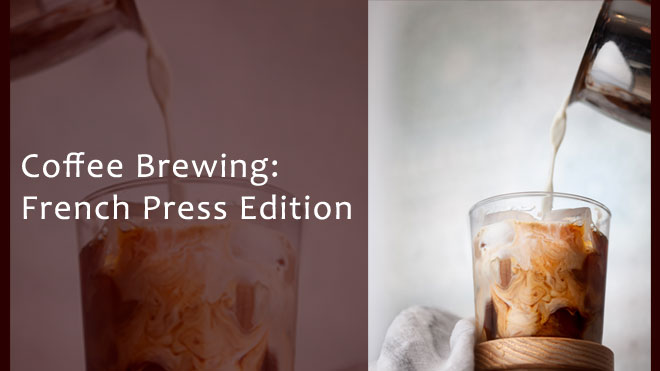Owning a French Press can seem glamorous and classy, until you realize you have no idea how to actually use it. Lucky for you, this article will take you on the step by step journey of preparing the best coffee of your life, this time with the help from a French Press!
If you are a fan of rich coffee flavors and big body coffee, you just found your best friend. This full-immersion method is sure to satisfy even the pickiest drinkers, while amazing them with the simple design on the outside, yet the interesting process on the inside. Nothing compares to the experience of brewing your own coffee, let alone being able to control its taste, aroma and strength. Wondering how this can happen? Let the following paragraphs answer your questions.
How does it work?
Fun fact: even though its name might say something else, the French Press was first invented in Milan, Italy, more than 80 years ago and its simplistic design stuck from back then. But what actually happens inside? Basically, you put the hot water and the grounds together in the beaker, allow the coffee to extract, then you press the metal mesh filter to the bottom, separating the grounds from the water, while allowing the natural oils and really fine particles to pass through, resulting in the thick body coffee.
The perfect ratio
If you want to find the perfect water to ground ratio, or you found it and want to keep it, you will definitely need a scale to make sure that happens. Not only this, but grounds weigh differently based on how they are roasted. For example, the lightly roasted ones tend to weigh a bit more than the dark roasts, simply because their moisture level is higher.
With this in mind, the general ratio is 1g of grounds for every 15ml of water, but as we mentioned before, this depends on your preferences, so you are free to experiment with your quantities. Generally, the more grounds, the higher the strength and vice versa.
What type of grind?
This detail has an impact on your extraction by influencing the way your coffee flavor will dissolve. Because of this, the setting that has been recommended for years now was ”very coarse”, but recently, more and more experts have approved that a more standard one can work just as well. Of course, this depends a lot on your contact time (when your grounds and water are combined) that can also vary, mostly because there are a few stages with this method of brewing: letting it steep, breaking the crust, depressing the plunger and decanting the coffee. Don’t worry, we will go into detail with this a bit further in the article.
Water temperature matters too
This is the last variable in this whole process. It also influences your extraction rate, meaning the hotter the water, the faster it will be and vice versa. Here, the recommended temperature is between 90.5 and 95 degrees Celsius, but again, experimenting will let you determine the best option.
So, how do you do it?
First, you need to heat up the water because this is the process that takes the longest. Remember that most of your coffee is water, so it is truly important for it to be clean and filtered. Then, if your coffee is not grinded yet, go ahead and do that. This is usually best because it ensures a certain freshness that only just-grounded beans can offer. The tip we can give you in this department is that hand grinders tend to work best in this scenario, not only because it is surprisingly convenient, but it also offers an unmatched consistency.
Now, the following step is optional, but recommended: preheating the French Press with some boiled water. There is no solid evidence that this factor would influence the taste in any way, but it is a good method if the French Press has not been used for a long time or it just needs a rinse to get rid of any leftover grounds.
Time to get your scale, timer and stirring spoon ready. Pour the desired amount of coffee grounds into the beaker, while shaking it gently to level everything up. Then, put the beaker on the scale, set it to 0 and start pouring the heated water, checking its volume. This process should be quick and it should get all the grounds wet. Once this is done, gently stir everything out a few times, then put the top on with the plunger all the way up to preserve the temperature, and leave it like that for three and a half minutes.
After they pass, you will notice that a crust has formed. Depending on how you want your coffee, you will either break it up and stir it lightly into the brew, for a full body, or you will discard it, for a light body. Then, put the top back on and press the plunger. If it goes down without any resistance, it means that the grounds are too coarse, or if it goes down too hard, they are too fine.
Once the plunger hits the bottom, you’re done! Make sure to decant it immediately, as leaving it in the French Press with the grounds on the bottom will influence its strength and aroma. One last, but very important tip: don’t pour the whole coffee, or drink to the last drop. You will be unpleasantly surprised by the grounds that escaped the filter and settled on the bottom.
Enjoy!

